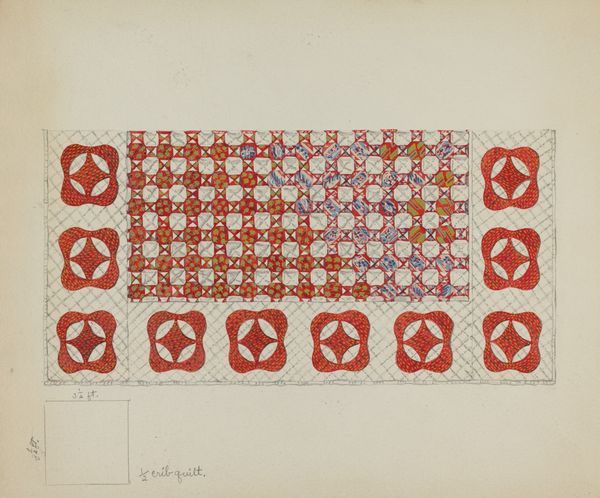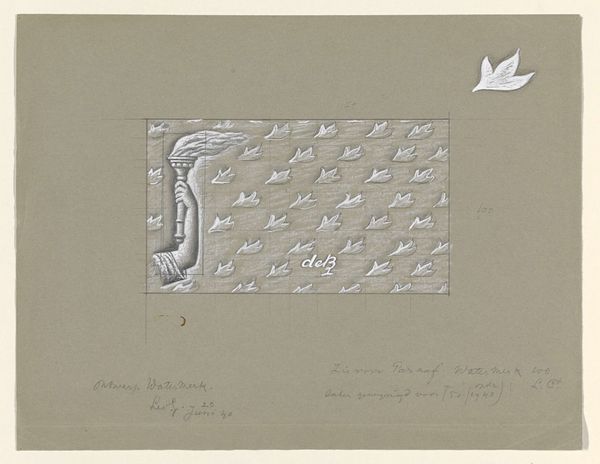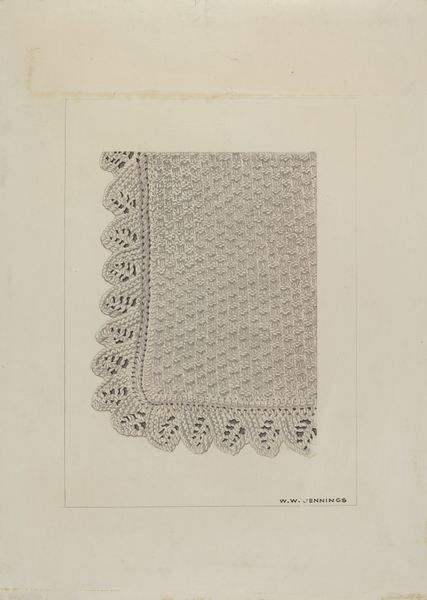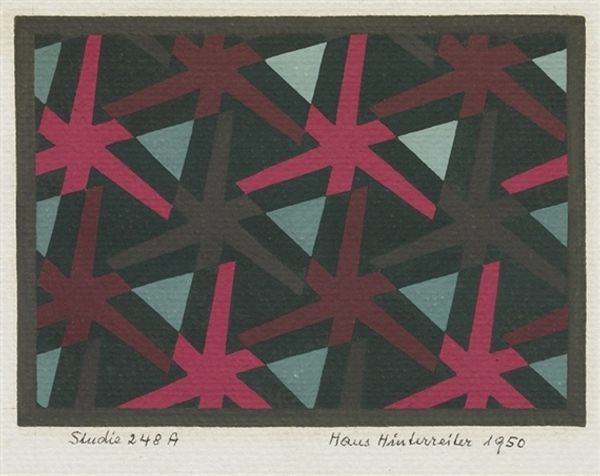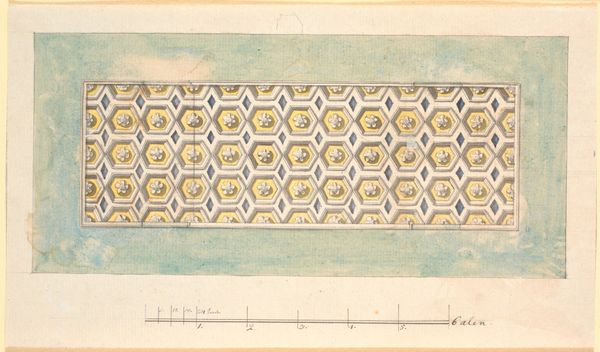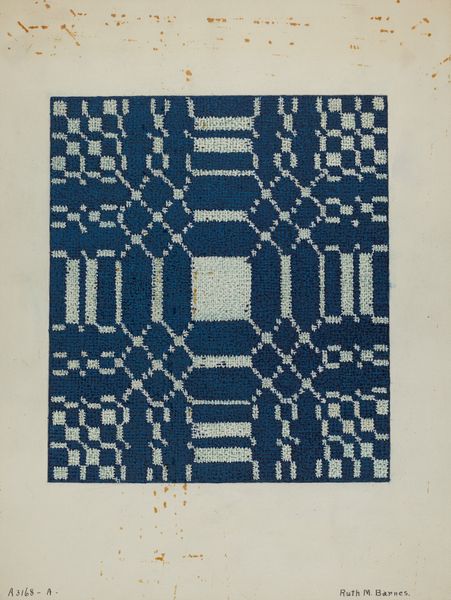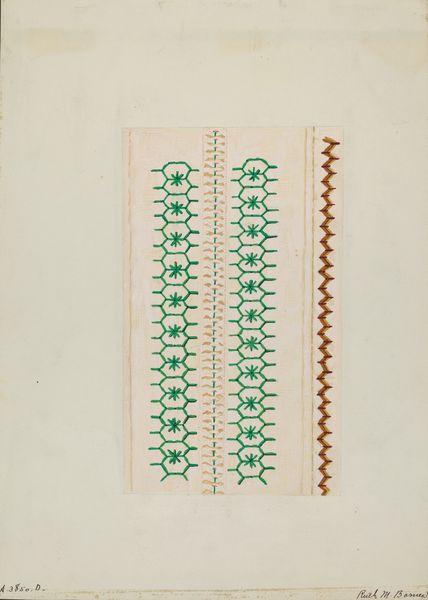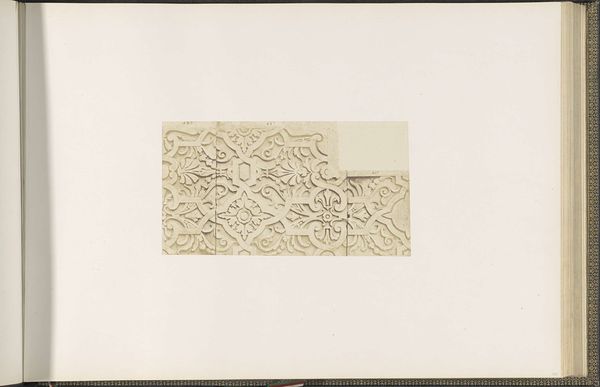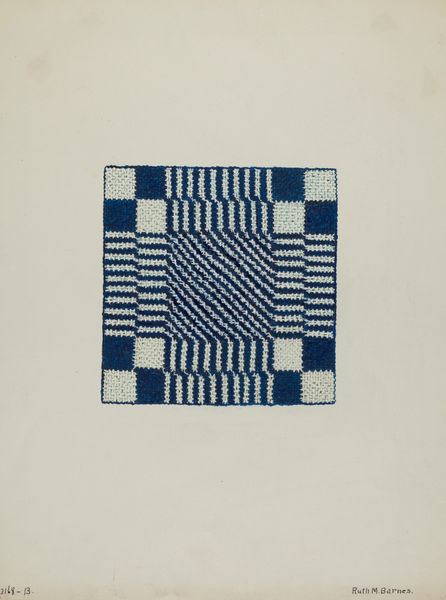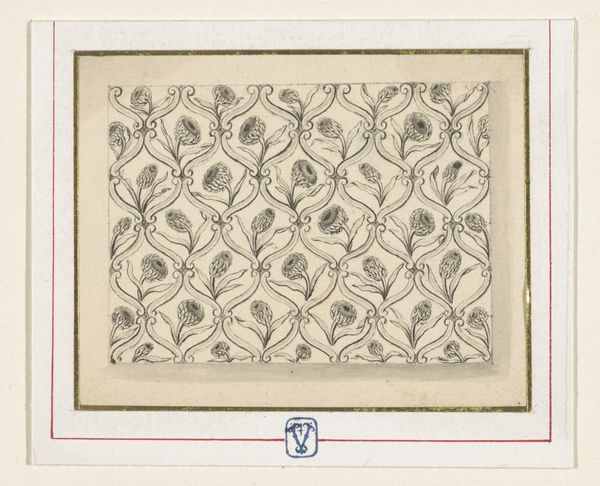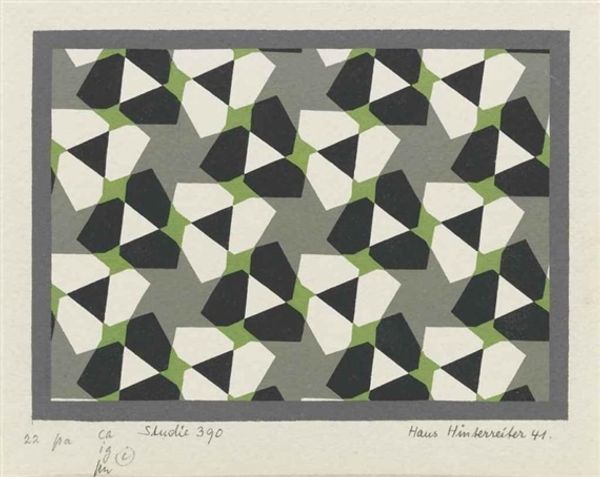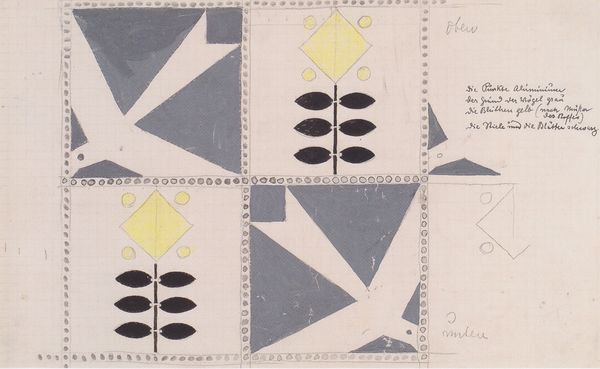
graphic-art, silk, textile
graphic-art
silk
textile
geometric-abstraction
Dimensions: height 25 cm, width 35 cm, height 18.4 cm, width 27.5 cm
Copyright: Rijks Museum: Open Domain
Editor: Here we have “Staal met bedrukte zijde, dessin Buddha,” a printed silk textile from 1919, created by the Wiener Werkstätte. There’s something quite striking about the geometric pattern against the dark backdrop. What strikes you when you view this piece? Curator: Well, what immediately grabs my attention is the way this piece exemplifies the cross-cultural appropriations so characteristic of early 20th-century design. The textile's name, referencing Buddha, alongside the geometric patterns, asks us to consider the dynamics of orientalism present within the Art Nouveau movement and the Wiener Werkstätte specifically. It compels us to question whether it's an appreciation or an appropriation, and what power dynamics are at play when non-Western cultures are mined for aesthetic inspiration. What do you make of the title's cultural reference, seemingly disconnected from the abstract visual language? Editor: I didn't think of it that way initially. I suppose the word "Buddha" hints at a spiritual connection, but it does feel... detached from the design itself. How do you see the design elements working in conversation with the loaded title? Curator: It raises the critical question of superficial engagement versus genuine cultural understanding. The design, though beautiful, utilizes a culturally significant term to evoke an "exotic" allure, rather than delving into the philosophical depths of Buddhist teachings. This piece can serve as a point of reflection on the ethical responsibilities of artists and designers when drawing from other cultures. Where do you see examples of this dynamic playing out in contemporary design and art? Editor: I'm starting to see a broader picture now, recognizing the layers of interpretation beyond just aesthetic appeal. It makes me rethink similar examples I've come across, prompting a deeper consideration of cultural sensitivity and the historical contexts that shape artistic expression. Curator: Exactly! It's about moving beyond surface-level appreciation and understanding the intricate relationships between art, history, and culture.
Comments
No comments
Be the first to comment and join the conversation on the ultimate creative platform.
